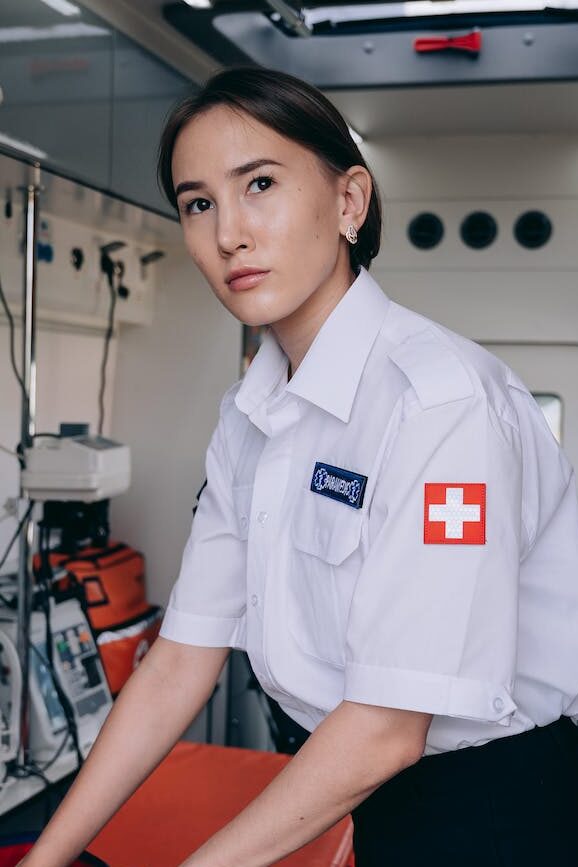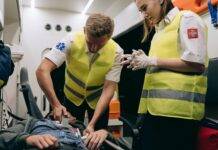
First Aid Certification: Your Guide to Being Prepared
First Aid Certification : Accidents and emergencies can happen at any time and in any place. Having the skills and knowledge to provide immediate assistance can make a significant difference in saving lives. This is where first aid certification comes into play. In this comprehensive guide, we’ll delve into the importance of first aid certification, the process of obtaining it, and the benefits it offers.
Introduction
Accidents are unpredictable, and they can strike at any moment. Whether you’re at home, work, or enjoying outdoor activities, knowing how to administer first aid can mean the difference between life and death. First aid certification equips you with the skills to offer immediate assistance until professional medical help arrives.
Why First Aid Certification Matters
When an emergency occurs, a prompt and knowledgeable response is crucial. First aid certification ensures that you have the training to handle a wide range of emergencies, from minor injuries to more serious incidents. It empowers you to take action without hesitation.
Understanding Different Levels of First Aid Certification
There are various levels of first aid certification that cater to different needs. Basic first aid covers fundamental techniques, while advanced and pediatric certifications focus on specialized skills needed in specific situations.
Basic First Aid
Basic first aid training covers foundational skills such as wound care, burns, and fractures. Participants learn how to assess a situation and provide initial care until medical professionals arrive.
Advanced First Aid
Advanced first aid certification goes a step further by teaching participants how to handle more complex emergencies. This includes dealing with multiple casualties, providing advanced airway management, and administering certain medications.
Pediatric First Aid
Pediatric first aid is designed for those who work with children. It covers unique situations such as childhood illnesses, choking hazards, and child-specific CPR techniques.
The Process of Getting Certified
Becoming first aid certified involves several steps that ensure you gain a comprehensive understanding of emergency response.
Choosing a Reputable Provider
Selecting a recognized and credible training provider is essential. Look for organizations that follow established guidelines and have experienced instructors.
Course Duration and Curriculum
The duration of the course may vary based on the level of certification. The curriculum typically includes hands-on training, theoretical lessons, and practical assessments.
Hands-on Training and Evaluation
First aid is a practical skill, and hands-on training is a crucial component. Participants practice techniques on mannequins and receive feedback from instructors.
Key Skills You’ll Learn
First aid certification equips you with essential life-saving skills that can make a significant impact in emergencies.
CPR (Cardiopulmonary Resuscitation)
CPR is a vital skill that involves chest compressions and rescue breaths. It can help maintain blood circulation and oxygenation in a person experiencing cardiac arrest.
Choking Relief Maneuvers
Knowing how to assist a choking individual can prevent a life-threatening situation. First aid training teaches various techniques to dislodge an obstructed airway.
Wound Care and Dressing
Proper wound care reduces the risk of infection and accelerates healing. Participants learn how to clean, disinfect, and dress wounds effectively.
Basic Medical Assessment
First aid providers are trained to assess a victim’s condition and prioritize care. This skill is crucial for determining the severity of injuries and providing appropriate treatment.
Benefits of First Aid Certification
First aid certification offers numerous advantages beyond the ability to provide immediate assistance.
Confidence in Emergency Situations
Certified individuals are more confident when faced with emergencies. They can take control of the situation and provide effective aid, reassuring both the victim and those around them.
Contribution to Public Safety
First aid providers contribute to building safer communities. Prompt intervention can prevent minor injuries from escalating into more serious conditions.
Enhanced Employability
Many employers value staff with first aid certification. It’s a valuable skill that can set you apart in the job market, especially in roles that involve customer interaction or safety responsibilities.
Renewal and Staying Updated
To maintain the effectiveness of your first aid skills, regular renewal and updates are necessary.
Regular Refreshers
Skills can fade over time, so participating in refresher courses keeps your knowledge current and your skills sharp.
Keeping Up with Guidelines
First aid techniques and guidelines evolve, so it’s important to stay informed about the latest recommendations.
Making First Aid Part of Your Lifestyle
First aid isn’t just a certification; it’s a mindset and a way of life.
Encouraging Friends and Family
Spread awareness about the importance of first aid among your loved ones, encouraging them to also become certified.
Being Prepared at Home and Outdoors
Accidents can happen anywhere. Having a well-stocked first aid kit at home and during outdoor activities ensures you’re prepared for the unexpected.
First Aid Kits and Their Importance
A properly stocked first aid kit is an essential tool for any first aid provider.
Essential Items for Every Kit
Bandages, antiseptics, adhesive tape, and scissors are some of the basic items that should be in every first aid kit.
Tailoring Kits for Specific Activities
Depending on your lifestyle, you might need additional items in your kit, such as insect repellent for outdoor enthusiasts or specific medications for those with allergies.
The Psychological Aspect of First Aid
Providing first aid goes beyond physical care; it also involves providing comfort and reassurance.
Staying Calm Under Pressure
Remaining composed during emergencies helps both the victim and those assisting. Your calm demeanor can positively impact the outcome.
Providing Reassurance to Victims
Offering support and reassurance to the injured or ill person can reduce anxiety and aid in their recovery.
Real-Life Stories: How First Aid Made a Difference
Real stories highlight the profound impact of first aid skills in critical situations.
Rescuing a Drowning Victim
Quick thinking and CPR knowledge saved a young swimmer from drowning before professional help arrived.
Swift Response to Heart Attack
Immediate intervention with CPR by a bystander gave a heart attack victim a higher chance of survival upon medical arrival.
Conclusion
First aid certification empowers you to be a proactive and effective first responder. By learning vital skills and techniques, you can make a difference in emergencies, contribute to public safety, and be a valuable asset to your community.
Rescue Procedures: Ensuring Safety and Preparedness
AED Usage: Saving Lives through Automated External Defibrillators
First Responder: The Unsung Heroes of Emergency Situations
FAQs
Q1: How long does a typical first aid certification course take? A: The duration varies based on the level of certification, but basic courses usually last around 4 to 8 hours.
Q2: Is first aid certification only for medical professionals? A: No, first aid certification is open to anyone who wants to learn life-saving skills, regardless of their profession.
Q3: Can I perform first aid without certification? A: While anyone can offer help in an emergency, first aid certification ensures you have the proper training to provide effective assistance.
Q4: How often should I renew my first aid certification? A: It’s recommended to renew your certification every 2 to 3 years to stay up-to-date with the latest techniques and guidelines.
Q5: Where can I find reputable first aid certification courses? A: You can find courses offered by organizations like the Red Cross, local community centers, and online platforms.

























gedaref sudan